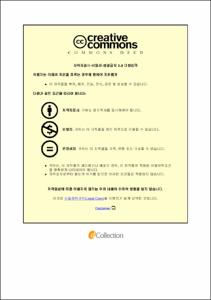Ulsan Univ. Repository
Thesis
General Graduate School
Materials Science & Engineering
2. Theses (Ph.D)
Phenomenological Aspects in Phase Transition from Ferroelectric to Relaxor State in Ternary Bi0.5Na0.5TiO3-SrTiO3-ABO3 Ceramics
- Abstract
- Piezoelectric materials play important roles in mechatronics as sensors and actuators in which lead zirconate titanate that contains more than 50 wt% Pb has been primarily used over last decades. However, environmental concern on harmful elements accelerates extensive studies on lead-free piezoelectric materials. Bi-perovskite materials and their solid solutions, especially Bi0.5Na0.5TiO3-SrTiO3 (BNT-ST) ceramics attract great attention because of their large strains obtained at low driving electric fields 4 kV/mm when modified with other ABO3 compounds or impurities. This low field-induced strain is believed to be related with the chemically induced phase transition from ferroelectric to relaxor state in ternary BNT-ST-based ceramics. However, exact understanding about the phase transition in ternary BNT-ST-based ceramics is still lacking. Therefore, there is a necessity for extensive research on the composition-derived phase transition and associated electromechanical properties in the ternary BNT-ST-ABO3 systems.
In the first stage of the work, with an aim to enhance the low driving field-induced strain in lead-free BNT piezoelectric ceramics, CaTiO3 and BiAlO3 are selected as new ABO3 compounds in two ternary systems Bi0.5Na0.5TiO3‒CaTiO3‒ SrTiO3 (BNT-CT-ST) and Bi0.5Na0.5TiO3‒SrTiO3‒BiAlO3 (BNT-ST-BA). The microstructures, crystal structures, dielectric, ferroelectric and electric field-induced strain behavior of these materials are studied. For the ternary BNT-CT-ST, it was found that a phase transition from nonergodic relaxor to ergodic relaxor was induced by ST modification in BNT‒CT ceramics. Consequently, a large electromechanical strain of 0.20% corresponding to high normalized strain d33* of 667 pm/V was obtained even under 3 kV/mm for 0.71BNT‒0.01CT‒0.28ST ceramics.
In the work of BNT-ST-BA piezoelectric ceramics, we found that the highest normalized strain d33* value of 707 pm/V was achieved at a relatively low electric field of 3 kV/mm from 2 mol% BA–modified BNT–ST ceramics. We suggest that the naturally induced nonergodicities in the ergodic relaxor generate internal stress. This induced internal stress is responsible for the excellent strain properties of this material. We believe that the materials synthesized in this study are promising candidates for actuator applications.
Finally, to further expand the understand about the effects and roles of ABO3 on the composition-induced phase transition from ferroelectric to relaxor state in ternary BNT-ST based ceramics, a comparison of the effect of two kinds modifiers, CaTiO3 and BaZrO3 (CT and BZ), with different tolerance factors upon the electromechanical properties of BNT-ST are employed. CT- modification decreases the t-factor of BNT-ST, while BZ-modification increases the t-factor within the investigated doping range 0-4 mol%. The different effects of CT and BZ modification upon the phase transition are clearly observed in the polarization and strain hysteresis loops. The CT-modified specimens maintain strong ferroelectricity without any abnormal enhancement in the electric field-induced strain. However, the addition of as little as 1mol% BZ induces a transition from a non-ergodic relaxor phase to an ergodic relaxor phase, thus resulting in disruption of the ferroelectric order and the generation of a high field-induced strain. The present authors believe that the substitution of large ions (such as Zr4+) into the B-sites, rather than the A-sites, of the Bi0.5Na0.5TiO3-based ceramics, plays a significant role in the phase transition behavior.
- Issued Date
- 2021
- Awarded Date
- 2021-02
- Type
- Dissertation
- Alternative Author(s)
- Hoang Thien Khoi Nguyen
- Affiliation
- 울산대학교
- Department
- 일반대학원 첨단소재공학과재료공학전공
- Advisor
- Jae Shin Lee
- Degree
- Doctor
- Publisher
- 울산대학교 일반대학원 첨단소재공학과재료공학전공
- Language
- eng
- Rights
- 울산대학교 논문은 저작권에 의해 보호받습니다.
- Appears in Collections:
- Materials Science & Engineering > 2. Theses (Ph.D)
- 파일 목록
-
-
Download
 200000363556.pdf
기타 데이터 / 4.55 MB / Adobe PDF
200000363556.pdf
기타 데이터 / 4.55 MB / Adobe PDF
-
Items in Repository are protected by copyright, with all rights reserved, unless otherwise indicated.